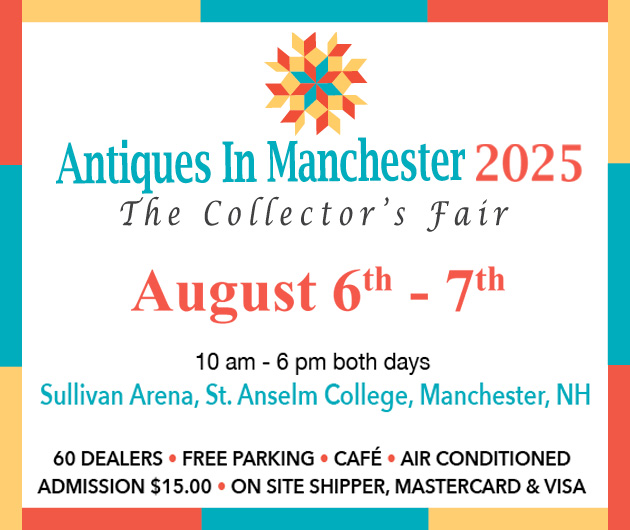Whitehawk Antique Indian and Ethnographic Art Show
August 15th, 2014
|
Navajo rug specialist Eric Phillips of Albuquerque, New Mexico, was asking $48,000 for this 1910-20 large Zia jar, 17" tall x 22" diameter. “The show was well attended,” Phillips told M.A.D., “with a lot of interest in everything. I sold more historic jars than Navajo weaving.”
This circa 1900 Apache figural tray was scheduled for a September 26 sale at Cowan’s Auctions in Cincinnati. It sold for $22,140 (est. $2000/3000).
Toronto dealer George Brown was asking $1950 for this circa 1850 Canadian Huron Assumption sash, finger-woven with imported English wool. Brown said he sold “quite a few books in a terrible book market— remarkable.”
Robert Bauver of Orange, Massachusetts, who primarily sells jewelry, was offering this 1890-1910 San Juan blackware olla for $3000. The 15-strand coral necklace displayed on the pot cost $2400. Bauver told M.A.D. that he was “very happy with the combined ethno and Indian shows. It’s great to be in a room of great art from all over the world.” |
Santa Fe, New Mexico
The first-ever combined Whitehawk Antique Indian and Ethnographic Art Show opened August 15 and ran through August 18 in Santa Fe. The show was created by merging two longtime antiques shows, the Whitehawk Ethnographic Art Show and the Whitehawk Antique Indian Art Show. The new show’s creation led to dealers grumbling because they didn’t think the two genres would be complementary. The combined shows also led to the creation of yet another new show, Kim Martindale and John Morris’s Antique American Indian Art Show Santa Fe, created because Martindale and Morris of M2 Productions believed there should be a “pure” Indian art show in Santa Fe in August.
The grumbling dealers were silenced when they saw the showroom at the Santa Fe Community Convention Center. The show was beautiful, the material was very high quality, and the mix of genres turned out to be complementary to the max.
Everybody liked this mix—dealers especially liked what they called “crossover.” The dream scenario is that a tribal art fan sees 35 kachinas, and they start to look very good. An alternate scenario is that a Navajo blanket collector finds an Indonesian textile he can’t live without.
But the first combined ethnographic and Indian art show may become sui generis. Before the show opened, producer Marcia Berridge announced her plan for 2015, which will go back to the Ethnographic Art Show followed by the Antique Indian Art Show. “I did the one show this year because it was getting difficult to get commitments from high-quality dealers. People really like this format, and if we replicate it somewhat, I think we can keep the quality for two shows.”
Who will exhibit in the new/old shows? “Some people just didn’t fit,” Berridge said. Her poster child for Whitehawk’s 2015 Ethnographic Art Show (“Featuring Antiques & Tribal Art, Native American Jewelry & other Vintage ‘Objects of Desire’”) is Stephanie Larrowe, whose Los Angeles, California, based TOTeM Salvaged makes tote bags from Navajo rugs, Chimayo blankets, Mexican serapes, and leather. Previously Larrowe had exhibited for all three years of the Objects of Art: Santa Fe. Berridge said the Antique Indian Art Show will “look similar to the 2014 show”—80% Indian art dealers and some tribal dealers. Native American jewelry (“Jewelry is king,” according to dealer Heidi Becker) will be sold at both shows.
Dates (all-important in these very competitive days in August) will be August 14 and 15 with an opening night party on August 13 for the Whitehawk Ethnographic Art Show and August 17 and 18 with the opening night party on August 16 for the Whitehawk Antique Indian Art Show. How does Berridge choose the dates? “The dates are tied to Indian Market [the contemporary art fair that draws 150,000 to Santa Fe a little later in August] and have been for thirty-six years. Indian Market’s dates are tied to the lunar calendar, so they are not always the same.”
For more information, go to (www.WhitehawkShows.com).
|
|
|
|
|
|
|
|
Originally published in the November 2014 issue of Maine Antique Digest. © 2014 Maine Antique Digest

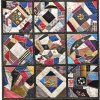
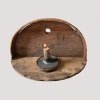




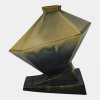

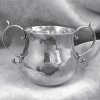



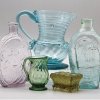



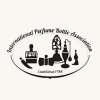

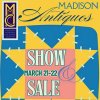




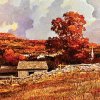

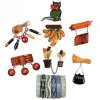


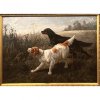

















 First-time Whitehawk exhibitor and tribal art dealer Moke Mokotoff of Hudson, New York, was asking $10,000 for this 18th-century 40" tall angel that once decorated a cathedral in Goa, a former Portuguese colony in India. The angel is playing a vina, an Indian instrument, instead of the more traditional (and Western) guitar. Early in the show’s run, Mokotoff said he’d sold jewelry from Tibet. The gallery’s Claudia Coenen said this was their first time at Whitehawk. “It’s been quite interesting, and we’ve had some sales. We are primarily Asian art, so this has been a learning experience for us and the show attendees.”
First-time Whitehawk exhibitor and tribal art dealer Moke Mokotoff of Hudson, New York, was asking $10,000 for this 18th-century 40" tall angel that once decorated a cathedral in Goa, a former Portuguese colony in India. The angel is playing a vina, an Indian instrument, instead of the more traditional (and Western) guitar. Early in the show’s run, Mokotoff said he’d sold jewelry from Tibet. The gallery’s Claudia Coenen said this was their first time at Whitehawk. “It’s been quite interesting, and we’ve had some sales. We are primarily Asian art, so this has been a learning experience for us and the show attendees.” Joan Wenger of Philadelphia was asking $850 for these very colorful 1920-30 Hopi painted wristbands made with commercial hide. She called the show “very, very good” and said she’d sold jewelry, beadwork, and textiles.
Joan Wenger of Philadelphia was asking $850 for these very colorful 1920-30 Hopi painted wristbands made with commercial hide. She called the show “very, very good” and said she’d sold jewelry, beadwork, and textiles. Dealer Loretta Carbonaro of Acquisition Inc., Maple Shade, New Jersey, was asking $14,500 for this Crow Indian rifle sheath that she dated to the “Crow Indian War period” (the 1880s).
Dealer Loretta Carbonaro of Acquisition Inc., Maple Shade, New Jersey, was asking $14,500 for this Crow Indian rifle sheath that she dated to the “Crow Indian War period” (the 1880s). Pueblo pottery specialist Peter Carl of Oklahoma City, Oklahoma, was asking $2500 for this piece of art ceramics by Santa Clara potter Nora Naranjo that won an award at the Santa Fe Indian Market in 1982. How was the show? “Better than in years past. I think the interest is coming back.”
Pueblo pottery specialist Peter Carl of Oklahoma City, Oklahoma, was asking $2500 for this piece of art ceramics by Santa Clara potter Nora Naranjo that won an award at the Santa Fe Indian Market in 1982. How was the show? “Better than in years past. I think the interest is coming back.”

